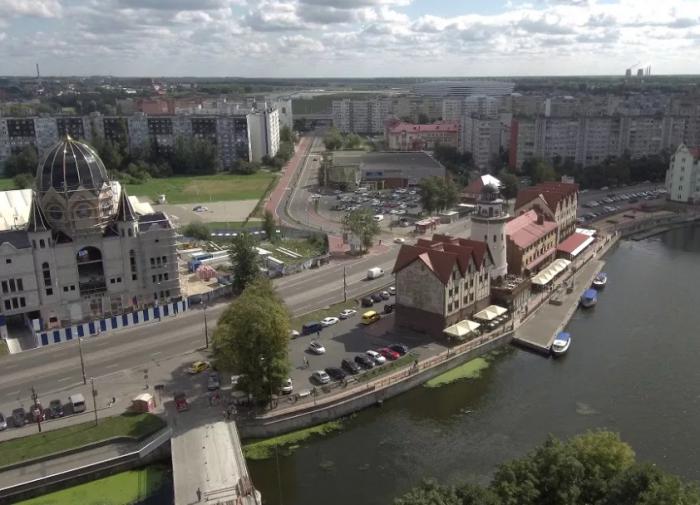What weapons Russia has in Kaliningrad to counter possible NATO attack
On May 16, former deputy head of the Polish Ministry of Defense, Romuald Sheremetiev, announced the need to demilitarize and rename Russia's Kaliningrad. Being as much straightforward as a military man can be, the Polish official called the Russian enclave "a powder keg between NATO's legs."

Meanwhile, Sweden's and Finland's initiation into the aggressive Western military bloc has highlighted the need for Russia to enhance the defense of its westernmost administrative-territorial region.
In this regard, on July 7, Andrey Klimov, Chairman of the Interim Commission of the Federation Council for the Protection of State Sovereignty and Prevention of Interference in the Internal Affairs of the Russian Federation, said that an off-site meeting of his department could be held in Kaliningrad in the near future.
We would like to recall here that in January 2021, that is, a year and a half ago, Over Defense publication posted an article about a possible NATO attack on the Kaliningrad enclave. Over Defense editors referred to materials provided by the Center for Naval Analyzes (CNA).
US-based analysts proposed to destroy Russia's Iskander ballistic missile launchers in a massive attack while simultaneously neutralizing the ships and infrastructure of Russia's Baltic Fleet and eliminating the S-400 Triumph air defense system. All this supposedly needs to be done for NATO to ensure the security of the Baltic States and the Suwalki corridor, the article said.
Kaliningrad is indeed the most powerful center of defense of Russia's western borders. The Baltic Fleet and a large-scale interspecific military group - only four divisions (about 50,000 people) are headquartered in the region under the cover of the zone of restriction and prohibition of access and maneuver (A2/AD). This Russian region is defended by electronic warfare systems, air defense systems, coastal and operational-tactical strike systems and by anti-ship missiles on various carriers.
In February 2016, due to growing tensions from the North Atlantic Alliance, Russia deployed Iskander missile complexes in the region. The systems that control Eastern Europe are capable of carrying nuclear warheads.
Four years ago, in the midst of its "Barbarossa-2" plan, NATO Secretary General Jens Stoltenberg demanded in an ultimatum from Russia to report the location of the Iskanders in the region. Needless to say that Russia refused to disclose this information to NATO.
In addition to Iskander missiles, there are at least two MiG-31K high-altitude fighters deployed in the Kaliningrad enclave. This aircraft is the carrier of the uninterceptable Kinzhal hypersonic missile, the range of which reaches up to 2,000 kilometers.
There are at least two small missile ships of project 21631 Buyan-M in Baltiysk. Those ships carry high-precision Kalibr (Caliber) cruise missiles (NATO reporting name SS-N-30 Sizzler). Their combat radius is up to 2,600 km, and each ship has at least eight launchers. Fast attack craft Odintsovo (Project 22800) is deployed there too.
In connection with NATO's endless provocations in the Baltic area, it was decided to increase the number of military personnel in this area. In February 2020, the 18th Guards Motorized Rifle Division was recreated. The division received its historical banner in March 2021.
Threat from the air
To ensure air and missile defense, a multi-stage and integrated system has been created to protect the civilian population and strategically important facilities.
In the village of Dunaevka, the Voronezh-DM radar station was deployed. The station is capable of tracking up to 500 targets at a distance of up to 6,000 kilometers. There is also the heavy-duty over-the-horizon Container radar located in the Nizhny Novgorod region and Mordovia. This radar can detect targets at a distance of up to 3,000 km and at altitudes of up to 100 km - i.e. in space.
S-400 Triumph complexes (NATO reporting name SA-21 Growler) were deployed in Kaliningrad in February 2012 to strengthen the security regime. To date, according to open data, at least four S-400 divisions stay on combat duty in the Kaliningrad region. They are covered by Tor systems (NATO reporting name SA-15 Gauntlet) and Pantsir-S1 (NATO reporting name, SA-22 Greyhound).
Reference. The S-400 is capable of withstanding air strikes, tactical, operational-tactical, strategic cruise and ballistic missile attacks at altitudes from ten meters to 27 kilometers with a combat radius of up to 250 kilometers.
Russia uses state-of-the-art ground-based Bal and Bastion completes with Onyx supersonic anti-ship missiles to protect the coastline. The systems were put into service in 2017.
From the air, Kaliningrad is protected by the 4th Separate Guards Naval Assault Novgorod-Klaipeda Red Banner Aviation Regiment named after Air Force Marshal I. I. Borzov.
Subscribe to Pravda.Ru Telegram channel, Facebook, RSS!


